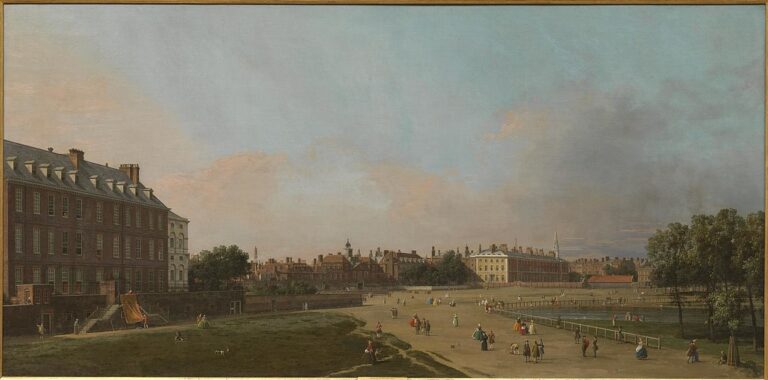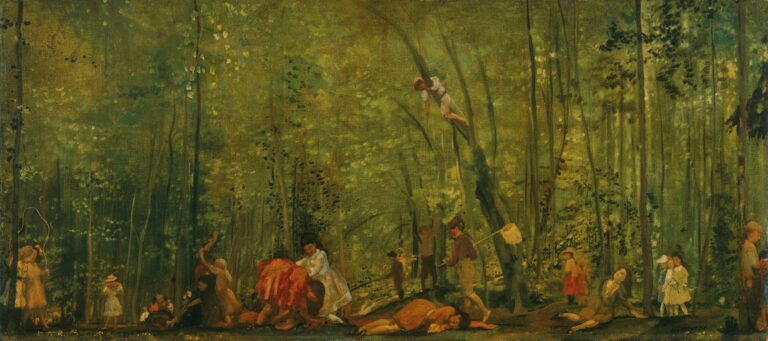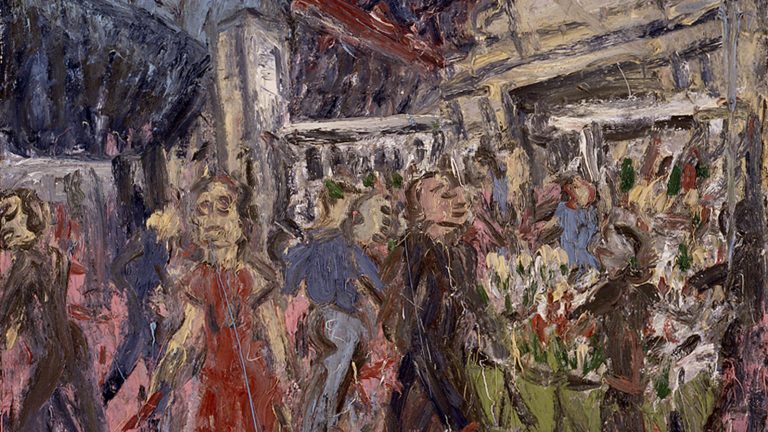Greta Freist: Painter of Austrian Expressionism
Born: 21 July 1904, Weikersdorf, Lower Austria
Death: 18 September 1993, Paris, France
Art Movement: Expressionism
Nationality: Austrian
Teachers: Rudolf Bacher and Rudolf Jettmar
Institution: Academy of Fine Arts, Vienna
Greta Freist: Painter of Austrian Expressionism
Life and Education of Greta Freist
Greta Freist, born in 1904 in Weikersdorf, Lower Austria, became a notable Austrian painter. Her education and early life shaped her artistic career.
Early Life and Influences
Greta Freist grew up in Lower Austria. Her hometown of Weikersdorf likely influenced her early artistic interests. As a young woman, she moved to Vienna to pursue her passion for art.
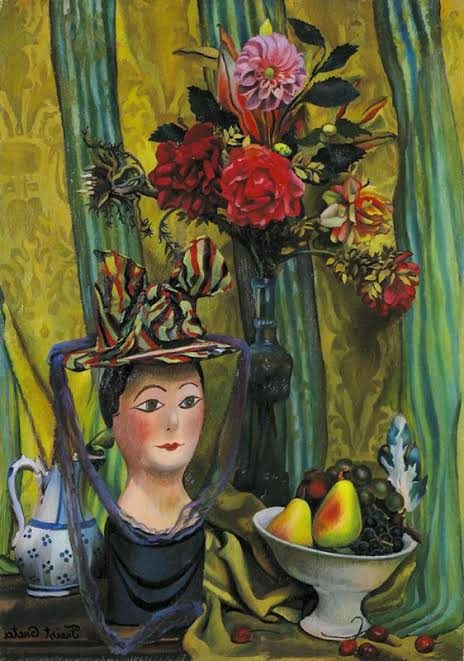

Vienna’s rich cultural scene exposed Freist to various artistic styles and movements. This vibrant environment helped shape her creative vision.
Formal Training at Academy of Fine Arts, Vienna
Freist studied at the prestigious Academy of Fine Arts in Vienna from 1924 to 1930. She trained under two important teachers: Rudolf Bacher and Rudolf Jettmar.
These mentors helped Freist develop her technical skills and artistic voice. During her time at the Academy, she met Gottfried Goebel, who became her life partner and fellow artist.
After completing her studies, Freist shared a studio in Vienna with Goebel. This space became a meeting place for artists and writers, further enriching her artistic experiences.
In 1936, Freist and Goebel moved to Paris. This relocation marked a new chapter in her life and career as an artist.
Artistic Career
Greta Freist’s artistic journey spanned several decades and styles. She explored different approaches to painting throughout her career, from realism to abstraction.
Foundations in Colored Realism
Freist began her career with a focus on magically colored realism. Her early works featured vivid hues and lifelike depictions of subjects. She studied at the Academy of Fine Arts in Vienna, learning from masters like Rudolf Bacher and Rudolf Jettmar.


Freist’s realistic paintings caught the eye of art circles in Vienna. She joined the Hagenbund, an important artists’ group, in the 1930s. This association helped her gain recognition and exhibit her work.
Transition to Abstract Painting
In the 1950s, Freist made a big change in her art. She moved away from realism and started creating abstract paintings. Her series “Mur” and “Lyrique” showcased this new direction.
Freist’s abstract works used shapes, colors, and textures to express ideas and emotions. She explored the freedom of non-representational art. This shift allowed her to experiment with new techniques and visual languages.
Artistic Associations and Exhibitions
Freist was active in many art groups throughout her career. She was part of “Der Kreis” and later joined the International Art Club. These connections helped her network with other artists and show her work.
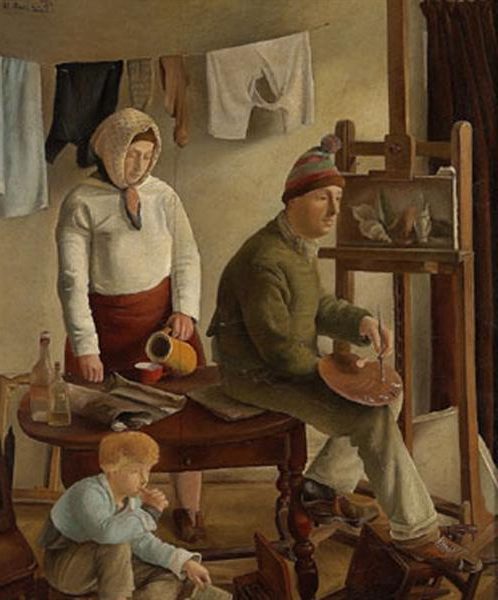
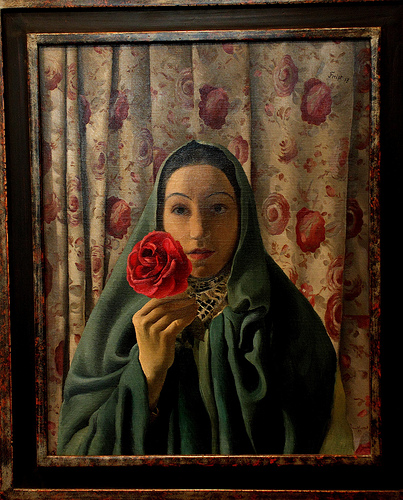
She regularly exhibited at the Salon d’Automne in Paris, a famous annual art event. Freist’s paintings were shown in galleries and museums across Europe. Her work gained praise for its unique style and emotional depth.
Freist’s long career lasted until her death in 1993. She left behind a diverse body of work that reflected the changing art movements of the 20th century.
Distinctive Style and Contributions
Greta Freist developed a unique artistic style that blended portraiture with abstract elements. Her work explored themes of identity and human emotion through innovative techniques.
Self-Portrait and Portraiture
Freist was known for her striking self-portraits and portraits of others. She used bold colors and expressive brushstrokes to capture the inner lives of her subjects. Her self-portraits often showed her in her studio, surrounded by art materials.
Freist’s portraits went beyond physical likeness. She aimed to reveal the personality and mood of the people she painted. Her time in Paris influenced her style, bringing in hints of French modernism.
Legacy and Influence in Modern Art
Freist left a lasting mark on 20th century art. She helped bridge the gap between traditional portraiture and modern abstraction. Her work with the Art Club in Vienna spread new ideas about painting.
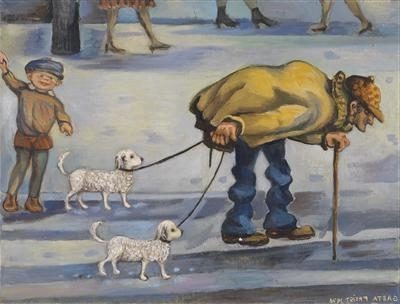
An ordinary man walking with his dogs, 1978
Freist’s partnership with Gottfried Goebel led to creative exchanges that shaped both artists. Their studio on Hartäckerstraße became a hub for writers and artists like Heimito von Doderer.
In 1991, the Museum of Lower Austria held a major solo show of Freist’s work. This event helped cement her place in art history. Today, her paintings continue to inspire new generations of artists.
Frequently Asked Questions
Greta Freist was an Austrian painter who made her mark in Paris. She studied art in Vienna and moved to France in 1936. Her work gained recognition in Parisian art circles.
What artistic movements influenced Greta Freist’s work?
Freist’s art was shaped by her time in Paris. She was exposed to various modern art movements of the early 20th century. Her style likely drew from elements of Post-Impressionism and Expressionism.
Can you discuss the evolution of Greta Freist’s painting style over her career?
Freist’s style changed as she spent more time in Paris. Her early works may have been more traditional. Later pieces likely became more experimental and modern. She exhibited at the “Salon d’Automne” and “Salon des Indépendants” in Paris.
Which museums or galleries have featured Greta Freist’s paintings?
The Albertina in Vienna has displayed Freist’s work. In 1961, she had a solo exhibition at the Cultural Office of Vienna. The Museum of Lower Austria organized a large solo show of her art in 1991.
What notable awards or recognitions has Greta Freist received for her artwork?
Specific awards for Freist are not mentioned in the search results. Her inclusion in Paris salons was a form of recognition. Having solo exhibitions in Vienna and Lower Austria also shows her art was valued.
How has Greta Freist contributed to contemporary art discourse?
Freist played a key role in the art scene as an Austrian in Paris. She helped bring international influences to Austrian art. Her work likely sparked discussions about women artists in mid-20th century Europe.
What educational background or training did Greta Freist have in fine arts?
Freist studied at the Academy of Fine Arts in Vienna. Her teacher there was Rudolf Jettmar. This training gave her a strong foundation in traditional art techniques. Afterward, she moved to Paris.



